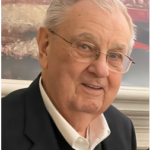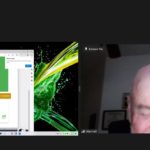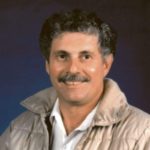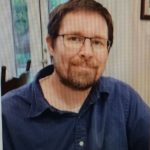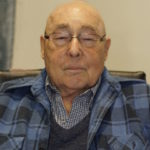By John Di Filippo, AF5MN
The news of Hal’s passing was a shock to most RWK members. The last time you saw Hal, prior to the COVID-19 stay-at-home order, he probably appeared healthy and robust as ever. You might have seen him at Winter Field Day, or at a board meeting or a general meeting. You might have spoken to him about programming his DMR radio, or using his digital hotspot in his car, or about HF, or possibly about anything except his health. The reason for that was because Hal was a very private man when it came to that topic and he didn’t want others worrying about him.
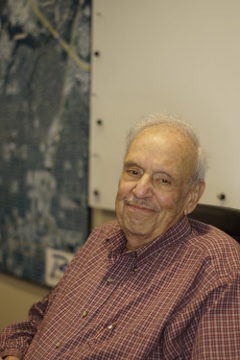
I’m sure many in the club didn’t even know that Hal had been dealing with heart issues for most of the last year. He took a quick turn for the worse in early June and spent about a week in intensive care. His heart was so weak that the doctors released him and advised that he make himself as comfortable as possible at home. His family, Patty and I, and some of his other close friends, made the most of his last weeks by spending every possible minute with him. One of my happiest experiences with Hal, and I hope his as well, was operating his Yeasu FT-1000 on Saturday during Field Day in his shack for a couple of hours. That was less than two days before he passed away, at his home, on the 29th of June.
I first met Hal in August 2013. Patty and I just happened to be jogging by his house one Saturday morning while he was in his front yard. I knew that he must have been an amateur radio operator based on the 45 foot tall beam antenna in his backyard! I had been interested in getting my ham license since I was a kid so I thought it was a good opportunity to stop and chat. He could not have been nicer and was excited to hear that I was interested in becoming a ham. We immediately became best friends. Over the past seven years we’ve vacationed together, talked on the phone almost daily, and spent at least a couple of days a week together. We never once ran out of things to talk about. We talked about ham radio, of course, but also computers, photography, pens, watches, antique cars, and so much more. Hal was one of the most interesting men I have ever met and I profoundly valued his wise counsel. To quote Philip Cook, N5UH, “Hal is what is disappearing in this world – a gentleman.”
Hal’s love of radio spanned 76 years – over three quarters of a century! He was there almost at the beginning. After all, the first successful Transatlantic radio transmission had only been achieved 27 years earlier and the nation’s first commercial broadcasts had only started in the early 1920s.
Hal first started repairing radios during World War II. American production had shifted to supporting the war effort so buying a new radio was difficult for most citizens. Hal decided to setup a radio repair shop in a corner of his bedroom and started repairing radios for his family, friends, and neighbors. He honed his skills enough to eventually go to work at a local radio repair shop. Hal worked on all the old classics such as Majestic, Philco, Crosley, and Zenith sets.Page 6 In the 1950s Hal obtained his Novice License but didn’t do much with it – school and a career got in the way. He attended Arlington State College (now the University of Texas at Arlington) and studied engineering. During the Korean War, Hal joined the Air Force and was stationed at Donaldson Air Force Base in South Carolina where he maintained aircraft communications equipment. Hal ultimately graduated from North Texas State University (now the University of North Texas) with a degree in Personnel Management and Industrial Relations. Hal then bought a old Ford Model-T and drove to New York to take a job managing a production line that manufactured radio power supplies. In the early 1960s Hal moved back to Dallas, bought a shortwave receiver and instead of sleeping at night, he would listen to his radio and log as many countries as he could find. In the mid-60s Hal obtained a technician license, bought a handy-talkie, and finally got on the air. Hal told me on more than one occasion that he thought it was “incredible” that he could use his HT along with a phone patch to speak with people on their phone from his car. Keep in mind that this was nearly 40 years before the Internet and cell phones were even a thing.
Although Hal enjoyed his HT, his real passion was DXing. In the early 70s he got his code speed up and obtained his General License. There was no such thing as VE sessions at Saint Barnabas back then. Hal took, and passed, the General Exam at the FCC offices in the Federal Building in downtown Dallas. In the mid-1970s Hal purchased his first HF transceiver, a Kenwood TS-830, setup a Yagi antenna on his chimney, and made his first international contact. A few years later in the mid-80s, he got his Advanced and Extra Licenses and put up a forty-five foot Rohn tower in his backyard.Hal’s tri-bander and 45’ Rohn tower (foreground)his Comet GP-3 VHF/UHF antenna (background)As I said earlier, Hal loved DXing. Talking to other hams in the US just wasn’t that interesting to him. Hal had a weekly QSO with a ham in Wagga Wagga, Australia. On a future vacation there, he and Liz ended up staying at his home. Hal even got a local Australian license on that vacation, VK2GBY. He did the same on a trip to New Zealand when he stayed at another ham’s home. Hal loved making friends over the radio. Hal used to go on vacation just as an excuse to operate remotely. He operated from the Netherlands Antilles, from Bermuda as VP9/, from Saint Maarten as PJ7/ and from the U.S. Virgin Islands as KP2/. He also operated mobile in Ireland as EI-4/and in Germany as DL/. He loved being at the center of a pile-up instead of on the other end fighting to be heard. While driving through Bavaria in 1993 and operating mobile, Hal had a QSO with a ham who persuaded him to spend the night at his house in Garmisch-Partenkirchen in the heart of Bavaria.
Another challenge that Hal savored was operating portable. To throw a wire in a tree and contact someone around the globe was more adventurous than sitting in his QTH with his 45 foot tri-bander. When he went on vacation, he’d take his Kenwood TS-440, power supply, and home brew 20 meter dipole. While in Bermuda, he paid a local to string up his 20-meter dipole between two coconut trees! Hal made thousands of contacts while operating from his QTH in Dallas and he meticulously kept a hand-written log book of all his QSOs. He was particularly proud of one QSO above all others. That was when he made contact with a research station in Antarctica. HF radio was the only way the engineers stationed there were able to communicate with the outside world. Again, by using his phone patch, Hal was able to connect the scientists in Antarctica, via his home phone, with their families.
Ham radio was a lifelong adventure for Hal and was one of the facets of his life that contributed to his making so many wonderful friends. I miss you so much OM. QRX for your friends. We’ll all be together again some day.

